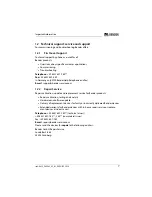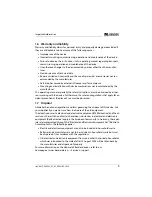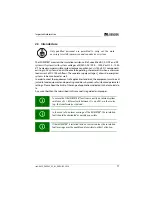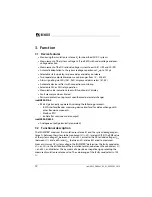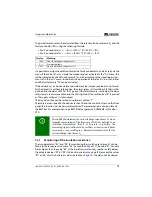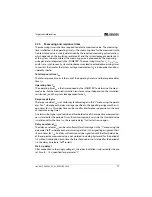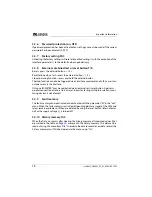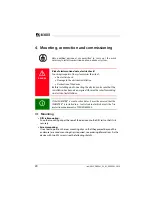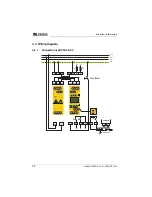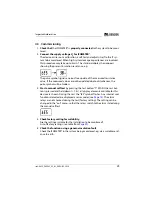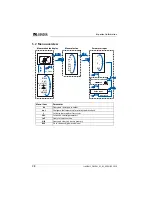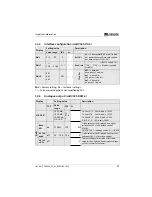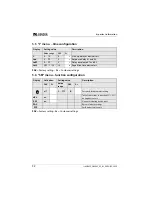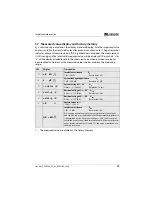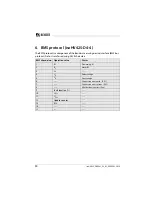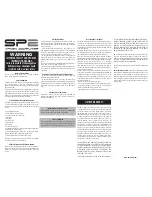
Important information
19
isoHV425_D00082_03_M_XXEN/05.2020
3.2.11 Digital interfaces (isoHV425-D4-4)
The ISOMETER® uses the serial hardware interface RS-485 with the following protocols:
BMS
The BMS protocol is an essential component of the Bender measuring device interface
(BMS bus protocol). Data is transferred using ASCII characters.
Modbus RTU
Modbus RTU is an application layer messaging protocol and it provides master/slave
communication between devices that are connected altogether via bus systems and
networks. Modbus RTU messages have a 16-bit CRC (Cyclic Redundant Checksum),
which guarantees reliability.
IsoData
The ISOMETER® continously sends an ASCII data string with a cycle of approximately 1
s. Communication with the ISOMETER® within this mode is not possible and no addi-
tional transmitter may be connected to the RS-485 bus cable. The ASCII data string for
the ISOMETER® is described on
The parameter address, baud rate and parity for the interface protocols are configured
in the "out"
menu.
3.2.12 Analogue interface (isoHV425-D4M-4)
The following functions can be selected at the potential-free analogue signal output:
Voltage output DC 0…10 V
Current output DC 4…20 mA
Current output DC 0…20 mA
Current output DC 0…400 μA
With "Adr = 0", the menu entries "Baud rate" and "Parity" are not shown
in the menu and the IsoData protocol is activated.
With a valid bus address (i.e. not equal to 0), the menu item "Baud rate"
is displayed in the menu. The parameter value "---" for the baud rate
indicates the activated BMS protocol. In this event, the baud rate for the
BMS protocol is set to 9,600 baud. If the baud rate is set unequal to "---",
the modbus protocol is activated with a configurable baud rate.



